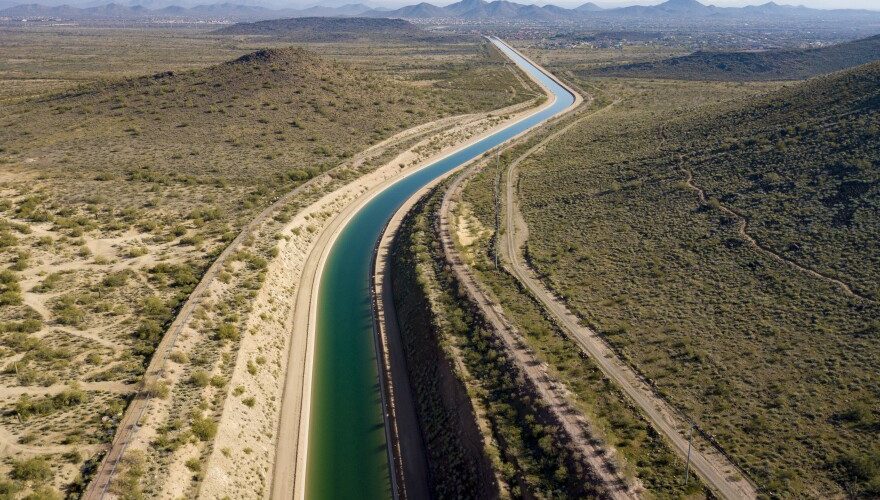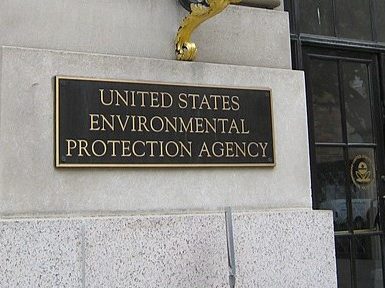Arizona is making significant investments and taking proactive steps to ensure the state can continue to grow and make up for potential shortfalls of groundwater, Governor Katie Hobbs announced in a recent press conference with key business and water stakeholders.
The announcement came in conjunction with the release of a 100-year model by Hobbs and Tom Buschatzke, director of the Department of Water Resources, outlining potential groundwater shortfalls if steps are not taken to bolster Arizona’s water supply.
“Families and businesses from around the world come to Arizona in part because they know we are serious about water management, and that we are the leader in safeguarding groundwater supplies,” Hobbs said. “What the model ultimately shows is that our water future is secure: the Assured Water Supply Program is working. Water supplies for homeowners and businesses are protected. Growth has been planned for and will continue. My message to Arizonans is this: we are not out of water, and we will not be running out of water.”
The information presented by the administration shows the results of the state’s Assured Water Supply Program, with Arizona utilizing less water today than it did six decades ago. This success in water conservation has underpinned economic development projects and fueled rapid growth.
The governor also announced she is investing an additional $40 million for the Water Policy Council, dedicated to water conservation, infrastructure, and sustainable groundwater management initiatives.
National media gets it wrong
Headlines from national media outlets following the governor’s press conference implied Greater Phoenix’s growth was on a downward trajectory and that the region’s water future is in doubt. But Arizona Chamber of Commerce & Industry President and CEO Danny Seiden says nothing could be further from the truth.
“If the East Coast media were actually listening to what the governor said and looked at the report, they’d know that Arizona’s water planning has ensured that we’re not only able to meet the demands of a growing region, but that our water planners have tremendous foresight,” Seiden said. “Where else in the country could water managers tell you what their water supply looks like over a 100-year period?”
Seiden said the report should give economic developers and job creators confidence that the state will continue to thrive.
“We don’t take this study lightly, but let’s put things in perspective: We’re not out of water now and it’s clear we have a toolbox full of tools to ensure we will not be running out of water,” he said. “After all, there are more than 80,000 lots in the area that have been issued water permits. We’re thriving. Job creators should have confidence in Arizona. Existing homeowners aren’t affected. Existing businesses aren’t affected. Nothing about the report’s findings affects commercial & industrial development.”
Seiden says naysayers predicting Arizona’s demise have been around for a long time, but their predictions haven’t materialized.
“Prematurely writing Arizona’s obituary has been a hobby of pundits who don’t know anything about the state,” he said. “Arizona has some of the world’s best collective water expertise, which we’ll continue to leverage just as we have for decades.”
Phoenix Mayor Kate Gallego has also been setting the record straight since the governor’s press conference.
“The local coverage has been pretty responsible, but there has been some national coverage that really confuses the issue,” Gallego told AZ Family. “It’s much broader than Phoenix but the national media is sometimes covering it in a way that implies Phoenix does not have that water supply we do.”
Gallego said her city’s water supply is secure.
“We actually store more groundwater than we use, so we are making bank deposit accounts in case we need to withdraw it in a time of a very severe drought,” she said.
Arizona’s water future is secure
The new plan reinforces Arizona’s history as a national model for water management. According to Hobbs, “We’ve built an infrastructure that can support our state through 100 years of drought.”
The governor made clear that the updated plan is not a pause button on the state’s growth. Existing homeowners, businesses, commercial, and industrial development will continue as planned, she said.
“The steps taken by Governor Hobbs and the Arizona Department of Water Resources further exemplify why Arizona leads the nation when it comes to water management,” said Chris Camacho, president & CEO of the Greater Phoenix Economic Council. “By proactively addressing opportunities for enhancing groundwater availability, we are demonstrating our dedication to long-term sustainability and securing Arizona’s water future.”
With the updated AMA Groundwater Model, more than $4 billion will be invested in innovative water infrastructure projects over the next decade. These projects will prioritize replenishment, recharge, and responsible conservation. Last year, former Governor Ducey and the Legislature passed a bipartisan budget investing more than $1 billion in water stewardship.
Water conservation spurs economic growth
Arizona growth has been impressive. Maricopa County, the state’s most populous, was named the fastest-growing county in the country for the fourth consecutive year, according to U.S. Census Bureau data. Job growth continues to remain high, with the Arizona Office of Economic Opportunity forecasting a growth rate of 2.7% over the next two years.
Meticulous planning by state leaders has allowed Arizona to continue on a path of responsible growth, focusing on leveraging sustainable resources and promoting innovation in water conservation. More than half of Arizona’s water is supplied through reclamation.
For instance, the Roosevelt Water Conservation District uses technology to reclaim and reuse water. By capturing and recycling urban stormwater runoff, they are implementing sustainable solutions that not only conserve water but also nurture the environment.
The measures have led to a decrease in per capita water use in Phoenix by more than 30% since 1980, even as the city’s population doubled.
“This is about smart growth, not no growth. We’ve learned from our past, we’re innovating in our present, and we’re planning for our future,” Hobbs said.
















Add comment